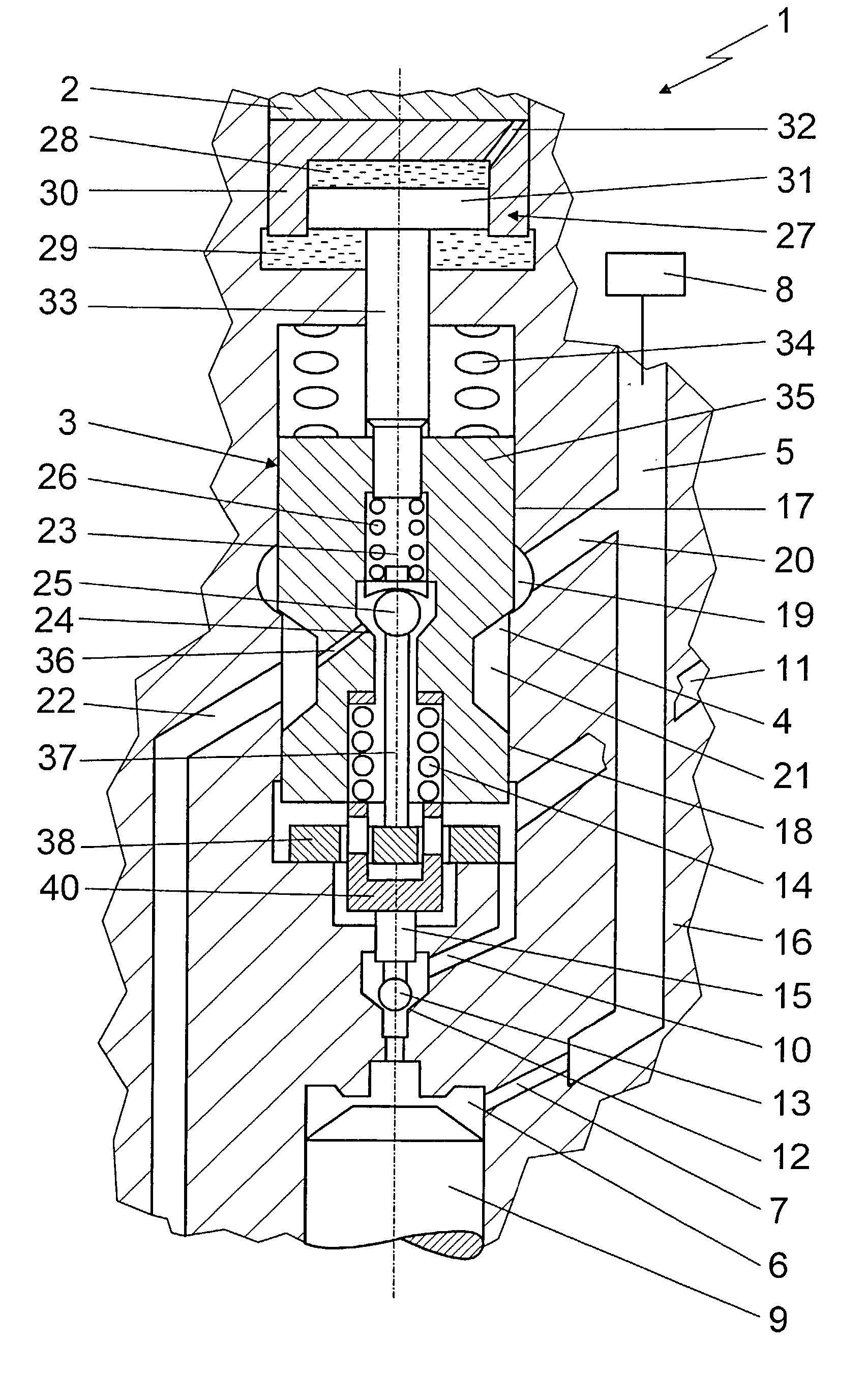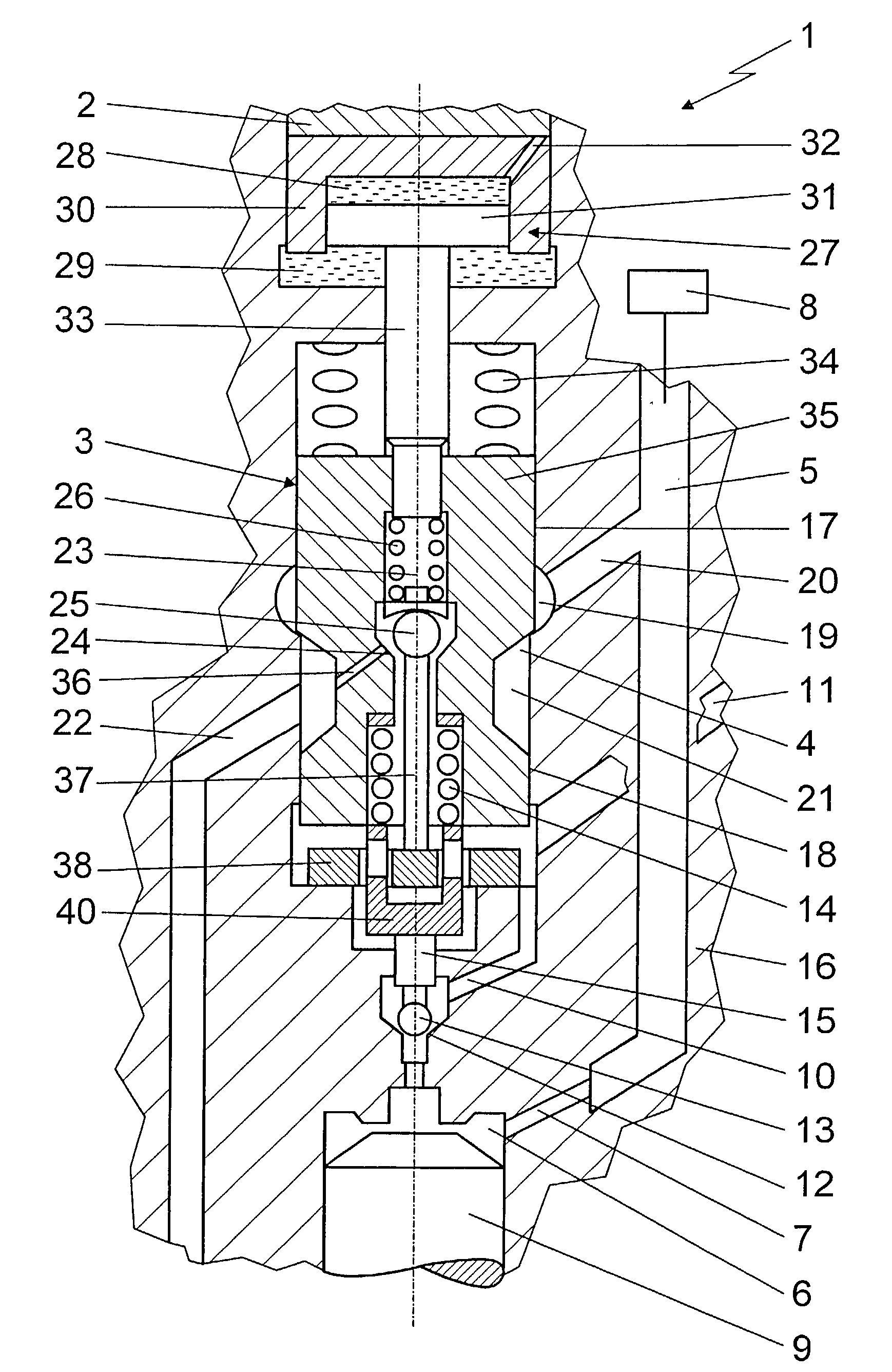Fuel injection device for internal combustion engines
a technology for internal combustion engines and fuel injection devices, which is applied in the direction of fuel injection apparatus, machines/engines, and feed systems, etc., can solve the problems of major leakage flows inadequately uniform opening pressure in the control valve, and the inability to close the nozzle again only with great difficulty
- Summary
- Abstract
- Description
- Claims
- Application Information
AI Technical Summary
Benefits of technology
Problems solved by technology
Method used
Image
Examples
Embodiment Construction
[0014] The exemplary embodiment shown in the drawing shows a fuel injection device 1 in simplified form, with an actuator 2 that is operatively connected to a valve member 3. This valve member 3 is disposed in a high-pressure delivery system of the fuel injection device 1, which connects a high-pressure fuel source 8 to a nozzle chamber, not shown in detail of an injection nozzle, leading into a combustion chamber of an internal combustion engine of the motor vehicle. For displacement of the valve member 3 in a valve housing 16, an actuator 2 is provided, by means of which the valve member 3 is triggerable in such a way that it can be lifted from a first valve seat 4.
[0015] When the valve member 3 is in contact with the first valve seat 4, it disconnects the nozzle chamber from the high-pressure fuel source 8 of the fuel injection device 1. In this position of the valve member 3, no high pressure prevails in the nozzle chamber, and the injection nozzle is closed. A control chamber 6...
PUM
 Login to View More
Login to View More Abstract
Description
Claims
Application Information
 Login to View More
Login to View More - R&D
- Intellectual Property
- Life Sciences
- Materials
- Tech Scout
- Unparalleled Data Quality
- Higher Quality Content
- 60% Fewer Hallucinations
Browse by: Latest US Patents, China's latest patents, Technical Efficacy Thesaurus, Application Domain, Technology Topic, Popular Technical Reports.
© 2025 PatSnap. All rights reserved.Legal|Privacy policy|Modern Slavery Act Transparency Statement|Sitemap|About US| Contact US: help@patsnap.com


